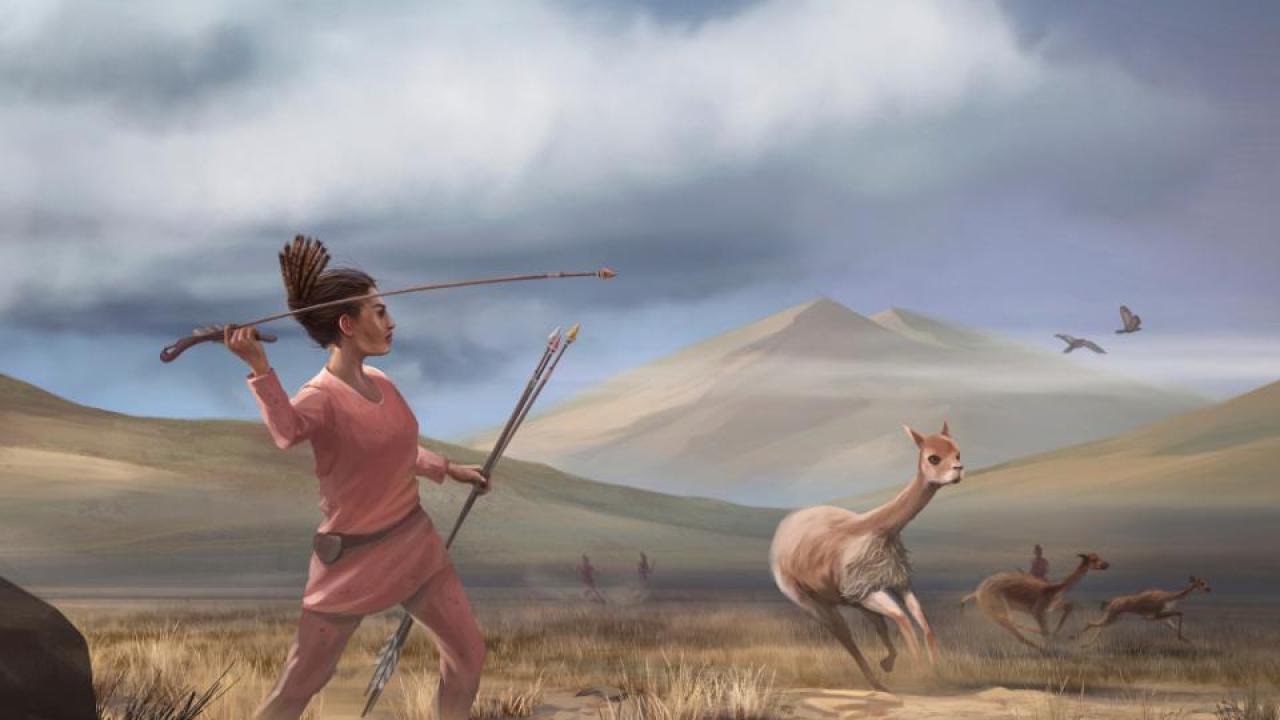
Early Big-Game Hunters of the Americas Were Female, Researchers Suggest
Challenges Age-Old ‘Man-the-Hunter’ Hypothesis
By Karen Nikos-Rose, UC Davis News
"For centuries, historians and scientists mostly agreed that when early human groups sought food, men hunted and women gathered. However, a 9,000-year-old female hunter burial in the Andes Mountains of South America reveals a different story, according to new research conducted at the University of California, Davis.
“An archaeological discovery and analysis of early burial practices overturns the long-held ‘man-the-hunter’ hypothesis,” said Randy Haas, assistant professor of anthropology and the lead author of the study, “Female Hunters of the Early Americas.” It was published today (Nov. 4) in Science Advances.
“We believe that these findings are particularly timely in light of contemporary conversations surrounding gendered labor practices and inequality,” he added. “Labor practices among recent hunter-gatherer societies are highly gendered, which might lead some to believe that sexist inequalities in things like pay or rank are somehow ‘natural.’ But it’s now clear that sexual division of labor was fundamentally different — likely more equitable — in our species’ deep hunter-gatherer past.”
In 2018, during archaeological excavations at a high-altitude site called Wilamaya Patjxa in what is now Peru, researchers found an early burial that contained a hunting toolkit with projectile points and animal-processing tools. The objects accompanying people in death tend to be those that accompanied them in life, researchers said. It was determined that the hunter was likely female based on findings by the team’s osteologist, James Watson of The University of Arizona. Watson’s sex estimate was later confirmed by dental protein analysis conducted by UC Davis postdoctoral researcher Tammy Buonasera and Glendon Parker, an adjunct associate professor."
Read the full article at UC Davis News.